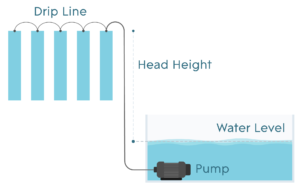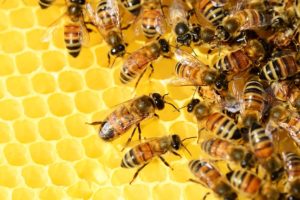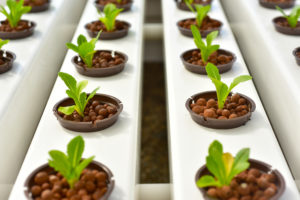Sure!
It’s not hard to make your own hydroponics tank, and it doesn’t cost much either. It’s fairly common to see hydroponic gardeners using DIY hydroponics tanks. You can use a variety of materials, and they’re often found around the house, or at very low cost.
What can you use? Here are some ideas for tank materials to get you started:
- Rubber or plastic storage bins
- Clean (ideally new) plastic trash cans
- Aquariums, fish tanks, terrariums (watertight)
- Commercial display boxes
Before you begin:
Volume aside, the most important aspect of a hydroponic tank is that it doesn’t leak. Seriously, understand that a leaking hydroponic tank can ultimately wreak havoc. Always test your tank for leaks before using it. Fill up the tank all the way and give it time to sit. Ideally, it should sit completely full for 24 hours minimum. That way, you’ll find any leaks, even if they are tiny, and slow flowing.
Put it over a tray or mat, and then fill it up. Keep an eye on it and look at every side of it to make sure you notice any leaks.
No leaks or weak spots? Then you can get it ready to use for your hydroponic system. Don’t just put it in place and begin, though. You need to clean it out first. Pathogens, pests, and bacteria can hang on for a long time. Don’t risk a crop by ‘saving time’ and using a dirty reservoir. Yes, if you purchased a new container it won’t need as much care, but it still has to go through a wash.
It’s best to avoid using chemical disinfectants. However, if you feel you must, make sure you’re not leaving any residue behind.
Safe, natural disinfectants are ideal. Vinegar and hydrogen peroxide are great choices (but not together). Whether you choose vinegar or hydrogen peroxide, mix it with at least 50% water. Use a clean sponge to scrub the solution in your tank. Start at one end and work your way around, just don’t forget the base.
After it’s clean, rinse it out, and make sure nothing gets left behind. You can dry your tank with a soft cloth or allow it to air dry.
What else does a hydroponic tank need?
You have the tank ready to go, but what else goes with it? While your hydroponic tank is more or less the food center of your hydroponic system, it needs some help. Just like one part of your body needs other organs to function, so does your hydroponic tank. Depending on the type of hydroponic system you use, you’ll need certain equipment. Of course, some items are a must-have, no matter the type of system.
Let’s look at some of the things you need:
Tubes/Tubing
Not every system requires tubing, but most do. The tubes help everything connect. They help water move from the tank to your system from the pump and drain out excess. They also connect air pumps to airstones and move water through plants in a drip system. Get appropriate tubing, designed for gardening or aquariums, and always check for leaks.
The Pump
Wick systems don’t need any type of pump, but most other systems do. The pump basically provides power to move nutrient solution to plants. If you have an air pump, it helps pump oxygen to your reservoir through an airline. When your pump is placed in the water, it’s a submersible pump. If it’s placed outside of the tank, it’s an inline pump.
Airstone
Airstones are necessary in DWC systems. Otherwise, plants will ‘drown’ without enough oxygen. Airstones are often called ‘aquarium bubblers’ and they’re a common fixture in aquariums. These are typically porous stone or limewood, and they provide aeration by diffusing bubbles into the tank. They’re used in aquariums to enhance the health of fish, without significant noise and large bubbles.
An airstone connects to the air pump by way of tubing. The pump makes air flow through the air tube, and to the airstone. Then, little bubbles emerge from the airstone, providing oxygen to plant roots.
Nutrient Solution
Nutrient solution is how you feed your plants. You use a special hydroponic fertilizer and mix it with water so plants can take in nutrients. You need to test the EC (or Electrical Conductivity) of your nutrient solution frequently and stay within your target levels. EC essentially shows you the concentration of nutrients in your reservoir.



